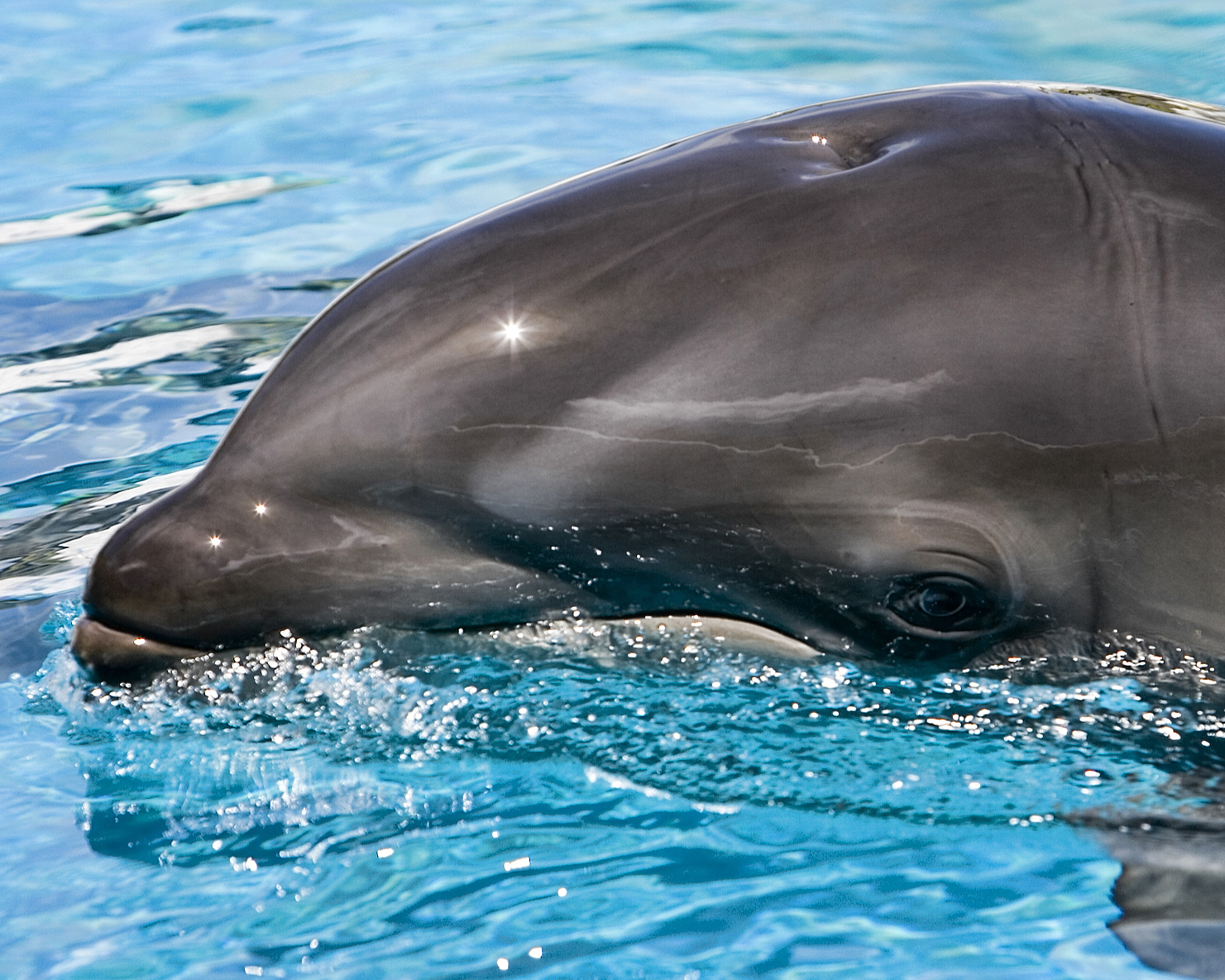 |
| Kawli'Kai Photo by Mark Interrante |
Dolphins and other marine mammals are among the most beloved
creatures of the sea. It could be because we, as humans, are mammals, so we
feel a special kinship to these oxygen dependant, thinking/feeling and
magnificent animals. We are most familiar with the large whales, killer whales
and bottlenose dolphins because they dominate marine conservation efforts and
sea life shows around the world. What many of us are likely not familiar with
is possibly the most rare hybrid marine mammal in the world–the wholphin.
This creature, as you may have guessed from its name, is a cross between a false killer whale and a dolphin.
The only known full wholphin specimen is a cross between a
male false killer whale and a female Atlantic bottlenose dolphin. The wholphin
is a fertile female named Keikaimalu born in 1985. She lives at Sea Life Park
in Oahu. Examples of differences from her parent species that she possesses are
her coloring and her teeth. She is darker than her mother is. Keikaimalu also
has fewer teeth than her mother does and more teeth than her father does - 66
to be exact. It is uncertain if this would be the case for all 50/50 (50%
dolphin and 50% false killer whale) wholphins, as there has not been enough
study on this hybrid species.
Keikaimalu has successfully reproduced three times in her
lifetime - which can reach between 40 and 60 years, if she is anything like her
parent species in that regard. Her first calf only lived a few days. Her second
calf lived nine years. While nine years is better than a few days, this
wholphin's lifetime was much shorter than that of her mother, the average
bottlenose dolphin and the average false killer whale. It is unclear if these
two calves' hybrid parentage had anything to do with their abnormally short
lives. The third time Keikaimalu birthed a calf was in 2005. This wholphin is a
female whose father is a bottlenose dolphin. Her name is Kawili'Kai. As of
2010, she is still alive and well at Sea Life Park.
Kawili'Kai is not a 50/50 wholphin like her mother, as she
is only 50% wholphin or 25% false killer whale and 75% bottlenose dolphin.
Kawili'Kai's most false killer whale trait is her size. She weighs more than an
Atlantic bottlenose dolphin. She is also dark like her mother.
It is believed that there are wholphins in the wild, though
none of them have had their DNA tested, which is the only true way to say if a
creature is a wholphin. They are not dissimilar enough in appearance to be
conclusively proved a wholphin by a picture or sighting. Nonetheless, their two
parent species are capable of breeding and have the same range and habitat.
Therefore, it is certainly possible. Keikaimalu may be the only 50/50 wholphin
specimen in the world and her daughter may be the only offspring of a wholphin,
but there is no way to be sure. For now, we must assume that she is one of a
kind. At least, she is exceedingly rare.
Sources
Wholphin Pictures, retrieved 1/7/11,
seapics.com/feature-subject/dolphin-and-porpoise/wholphin-pictures.html
Wholphin Store, retrieved 1/7/11, sealifeparkhawaii.com
No comments:
Post a Comment